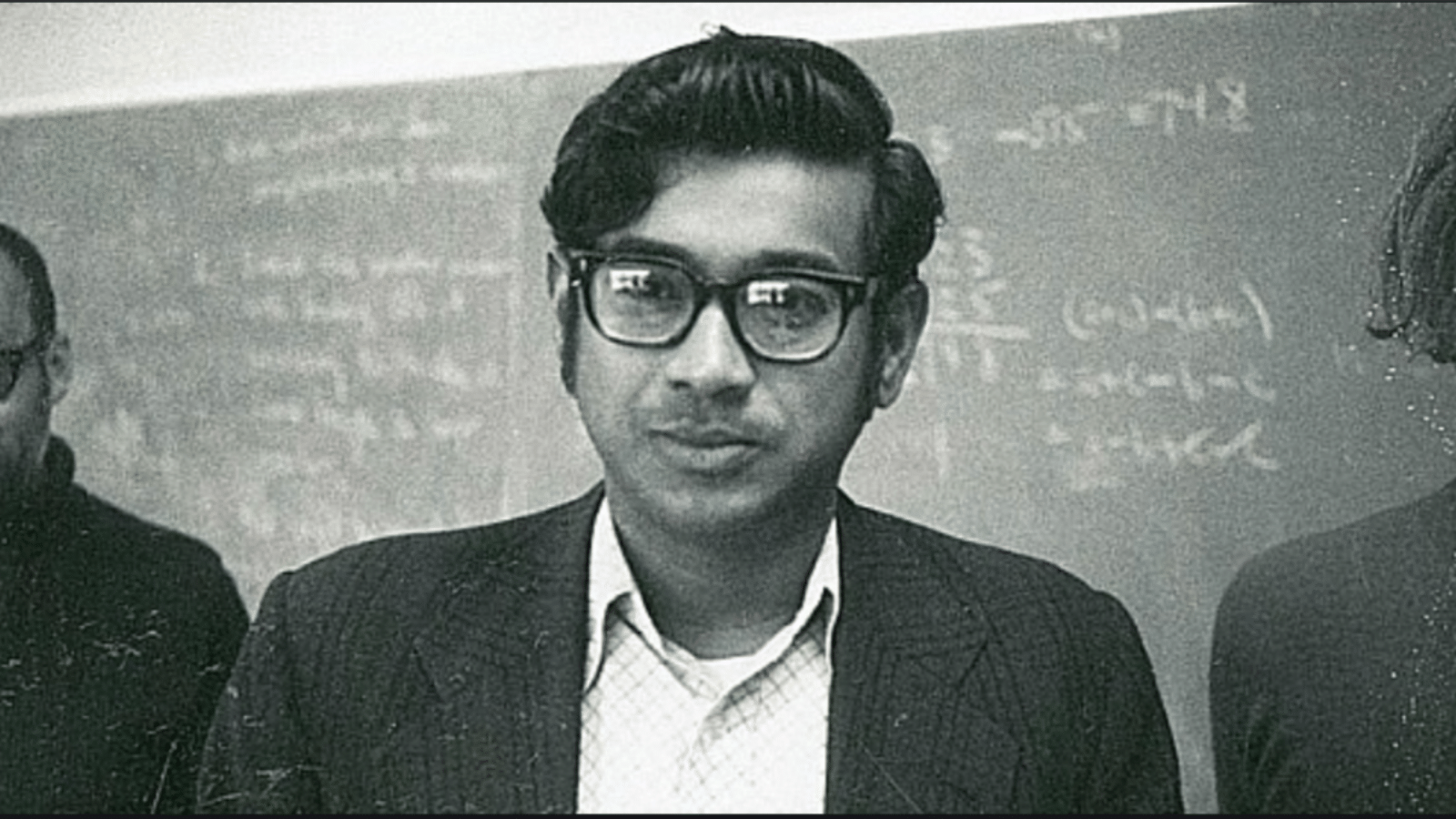Have you ever been curious about how a self-taught mathematician, Srinivasa Ramanujan from India achieved fame as one of the most respected names in the world of mathematics? Meet Srinivasa Ramanujan, a math prodigy whose amazing path began in Erode, Tamil Nadu, on December 22, 1887.
He faced plenty of hurdles, including a lack of formal education and money troubles, but his enthusiasm for mathematics was clear. Even as a kid, he had a natural gift for numbers, picking up advanced concepts all on his own by reading works like George Shoobridge Carr’s Synopsis of Elementary Results in Pure and Applied Mathematics.
By his teenage years, he was already coming up with his own theorems, outshining a lot of his classmates. His innovative work grabbed the attention of the math world when he started publishing papers in the Journal of the Indian Mathematical Society back in 1911.
But it was his exchange of letters with British mathematician G. H. Hardy in 1913 that really turned his life around. This crucial link took him to England, where he teamed up with Hardy at Trinity College, Cambridge.
The way Ramanujan contributed to mathematical analysis, number theory, and infinite series is simply incredible. He introduced some revolutionary ideas, especially around partition functions and continued fractions. Even though he died young at 32, his influence still resonates with mathematicians everywhere.
Know More About Srinivasa Ramanujan: The Self-Taught Mathematical Genius Through This Blog
Join us in discovering the inspiring story and achievements of this exceptional mathematician who faced challenges head-on and changed the landscape of mathematics forever.
Who Was Srinivasa Ramanujan? A Glimpse into His Life
Born on December 22, 1887, in Erode, Tamil Nadu, Srinivasa Ramanujan was a brilliant mathematician whose talent shone through the difficulties he faced.

Coming from a humble background, he showed a natural gift for math right from his childhood. His love for numbers drove him to dive into complex mathematical ideas mostly by himself, especially after he stumbled upon George Shoobridge Carr’s Synopsis of Elementary Results in Pure and Applied Mathematics.
This book sparked his enthusiasm and helped him create some amazing theories of his own. Ramanujan didn’t have much in terms of formal education or money, but he began to make a name for himself in India after releasing his first papers in 1911.
His big break came when he connected with British mathematician G. H. Hardy, who invited him to Cambridge University. This partnership really changed the game for Ramanujan, letting him make major contributions to number theory, infinite series, and continued fractions.
Unfortunately, his life was cut short by sickness, and he left us at the young age of 32. Still, Ramanujan made a huge mark with over 3,900 findings and the legendary “lost notebook,” which keeps inspiring mathematicians all over the globe.
His rise from a self-taught prodigy in India to a globally celebrated figure shows just how brilliant he was and the lasting influence he has on the field of math.
Why Was He So Famous? The Genius Behind the Numbers
Srinivasa Ramanujan gained fame for his incredible work in mathematics, particularly in number theory and infinite series, despite having very little formal training. His brilliance was in spotting patterns and connections in numbers that most people overlooked, which led to some revolutionary discoveries.
One of his key accomplishments was developing the partition function, which determines how many ways a number can be broken down into a sum of positive integers. This work opened up new understandings of number properties and inspired more research in the area.
Watch the full Video in Hindi on YouTube
Ramanujan is famous for the “Hardy-Ramanujan number,” 1729, which is the smallest number that can be written as the sum of two cubes in two distinct ways. His creative thinking also led to the development of mock theta functions, which played a key role in advancing the theory of modular forms and left a lasting impact on modern mathematics.
His work with British mathematician G. H. Hardy earned Ramanujan a ton of international recognition, as they released several important papers together.
What made him unique was his ability to mix intuition with thorough proofs, which still inspires mathematicians around the world. His legacy is alive and well, with more than 3,900 results that are still relevant in the field of modern mathematics.
Read about – https://itihaaskikhoj.in/aryabhatta-the-astronomer-and-mathematician/
The Journey to Cambridge: Collaborating with G.H. Hardy
In 1913, everything changed for Srinivasa Ramanujan when he sent a letter to the well-known British mathematician G.H. Hardy. This letter was packed with Ramanujan’s original math discoveries, proving his incredible talent.
Hardy was a little unsure at first, but he soon realized how brilliant Ramanujan was and asked him to come to Cambridge University in England. Arriving in April 1914, Ramanujan found himself in a completely different environment compared to India. He faced some cultural differences, but he soon teamed up with Hardy and J.E. Littlewood, another mathematician.
Their collaboration was a huge success, resulting in many research papers that made significant contributions to fields like number theory and infinite series. Hardy played more than just a mentor role; he was a shield for Ramanujan’s distinctive mathematical style. His goal was to cultivate Ramanujan’s incredible talent without holding back his imaginative spirit.
Their partnership led to the creation of the famous Hardy-Ramanujan asymptotic formula and opened doors to exciting concepts like number partitions. Unfortunately, Ramanujan’s health started to suffer from the harsh weather and different food in England.
But even with those struggles, his experience at Cambridge helped him become recognized as one of the greatest mathematicians of his generation. The connection between Hardy and Ramanujan is a famous tale in mathematics, highlighting how two brilliant thinkers can collaborate to produce incredible outcomes.
Read about Great Indian Woman Philosopher – https://itihaaskikhoj.in/lopamudra-the-great-philosopher-of-ancient-india/
Notable Contributions: Ramanujan’s Impact on Mathematics
The impact of Srinivasa Ramanujan on mathematics is simply remarkable, and his work continues to motivate mathematicians even now. He concentrated on number theory, infinite series, and continued fractions, revealing his special talent for spotting patterns and relationships in numbers.
A highlight of his discoveries is the formula for calculating pi (π) through infinite series, which has turned into a key element in computational mathematics. Ramanujan was a game-changer when it came to mock theta functions, which really opened up the world of modular forms and made waves in number theory.
His work on partition functions brought about some amazing discoveries, like congruences that show how we can break down numbers into sums of integers. For example, he found that some number partitions have unique characteristics, which has had a big impact on different branches of math, especially combinatorics.
A standout achievement is the discovery of the Ramanujan-Hardy number, 1729, which is famous for being the smallest number that can be expressed as the sum of two cubes in two distinct ways. This quirky characteristic has piqued the interest of those in number theory and is often dubbed the “taxicab number.”
Ramanujan’s innovative ideas laid the groundwork for future research in many mathematical domains. Despite his brief life, his profound insights and intuitive approaches have left an enduring legacy that continues to shape modern mathematics.
Conclusion
The story of Srinivasa Ramanujan is one of motivation and success against the odds. He journeyed from a little village in India to becoming a legendary mathematician, proving that with passion and determination, anything is possible. Even though he left us too soon in 1920, his work still plays a significant role in today’s mathematics. On December 22nd, India celebrates National Mathematics Day to commemorate his birthday, showing that genius can rise from the most modest beginnings.

